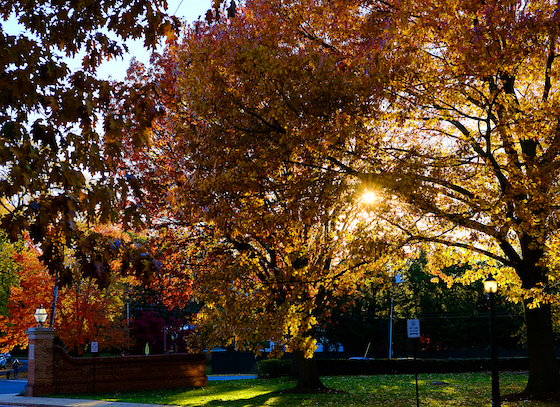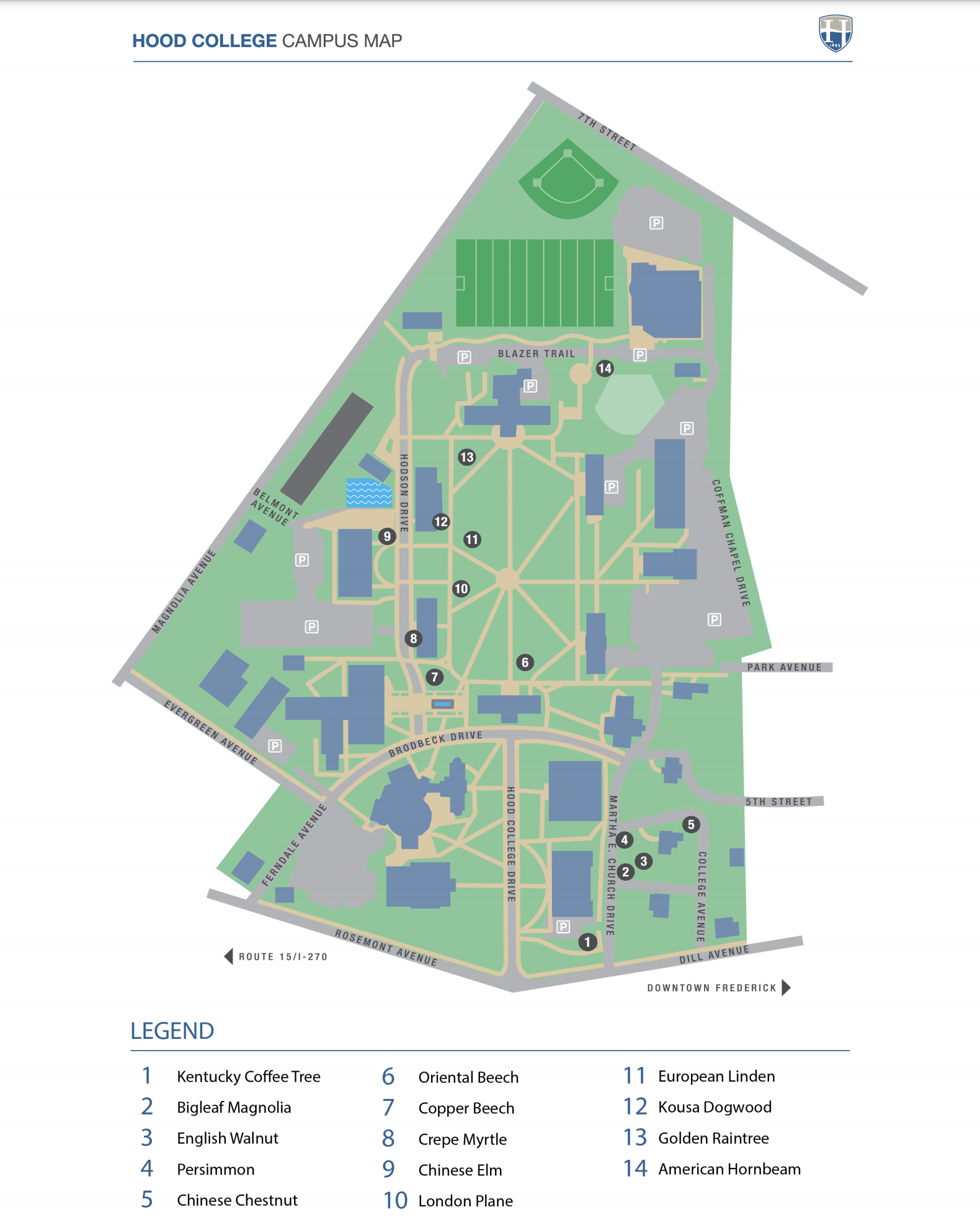Annual Guided Tree Walk at Hood College

Former teacher and environmental activist Bethany Dell'Agnello discusses the annual guided tree walk at Hood College.
Explore Our Scenic Campus
The Frederick Forestry Board is hosting a guided tree walk at Hood College on Sunday, December 12, from 1-3pm. Hood’s campus is renowned for its stunning collection of trees sourced from around the world. This year’s guide is self-professed tree enthusiast Bethany Dell’Agnello. Below she shares some fun facts and previews what to expect during the event.
How did you get involved with hosting the tree walk and where does your interest in trees come from?
My degree is in biology and I was a secondary science teacher with FCPS for 25 years. I have been a hiker and nature hobbyist my entire adult life but really jumped knee-deep into learning tree identification after I retired from teaching in 2016. In 2018, I nominated a downtown Frederick tree as a potential champion for the Maryland Big Tree Program. When the measuring team measured my tree, they noticed my unbridled enthusiasm for trees and suggested I attend a forestry board meeting. I joined soon after. These tree walks are a marriage of my two great loves: nature and teaching.
Who started the tradition of planting such a diverse array of trees at Hood?
Mrs. Gertrude Apple, the second wife of Hood's first president, Joseph Henry Apple. She planned many landscape improvements and was determined to plant interesting and notable trees.
What are some of the most unique trees on Hood’s campus that you’d like to highlight?
The very old bigleaf magnolia is the Maryland state champion! This means it is the largest of its species in the state. I understand it is slated to be cut down, which makes me very sad. It looks a bit bedraggled but still puts on quite a show. The leaves are the largest simple leaves of any species in North America at up to three feet long. There are also some really large, notable linden tree specimens and an unusual beech called an oriental beech. The very large oak behind the new dorm is likely a hybrid of two species of oaks—it’s one of the biggest I’ve ever seen of either of its two parent species.
Why is it important to preserve trees, whether for historical, cultural or environmental reasons?
It is in our nature to feel something special when standing next to something so deeply rooted in the earth, something old or even ancient, something that connects Earth and sky. I think that’s why people feel spiritually grounded when in close contact with trees, especially large ones. Apart from all that “woo-woo,” trees are a critical link in ecosystems that provide services necessary for life. These services include cleaning the air, filtering our freshwater, providing a habitat for the creatures around us, and most importantly, absorbing and storing carbon dioxide that can mitigate climate change. From a cultural standpoint, large trees have had significance for centuries. In some cultures, a particular tree might be a traditional place of ceremony and can serve that role for centuries.
What’s a surprising fact about trees that most people might not know?
So many. Perhaps many people don’t know that the centers of trees are actually dead. The most active layer of living tissue in the tree trunk is located just under the outer bark. Perhaps many people don’t know that tree seedlings make up a significant portion of the undergrowth of the forest and often those seedlings will change their size very little for many years, even decades, while they wait for a large tree to fall and create an opening. As soon as this happens, the little seedling will respond with rapid growth and try to outcompete other seedlings that are also excited about this new availability of sunlight. Perhaps people would be surprised to learn that the roots of a tree typically extend two to three times the width of its canopy. All those underground root systems are also in communication with each other, sending out chemical signals about nutrient availability and other factors. They even share resources from root to root, even between different species of trees. That is remarkable. There is a lot of research going on in this area right now.
To register for the Hood College tree walk, click here.

Hood College campus tree map.
Are you ready to say Hello?
Choose a Pathway
Information will vary based on program level. Select a path to find the information you're looking for!
